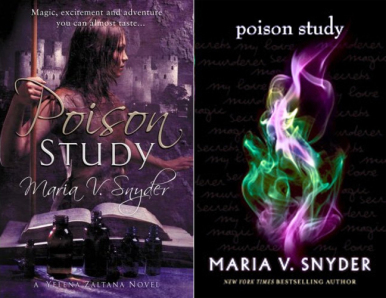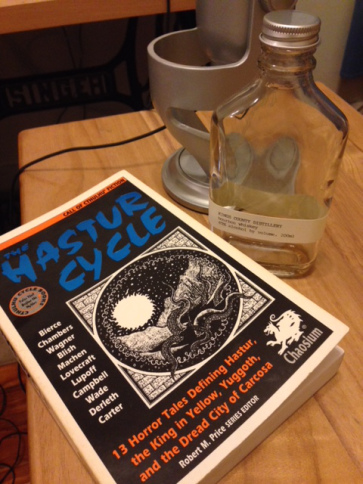
We’re always told not to judge a book by its cover. It’s usually one of the first idioms we learn, and for good reason. In the age of modern book marketing, book covers are a serious selling point, with changing covers mid-run of a series being enough of a faux pas to spark petitions from readers who want their shelves to look immaculate (I can’t find the particular petition I had in mind for this but believe me, it happens). I have a few preferences myself; I prefer paperbacks, I prefer illustrated covers over photographs, I avoid TV adaptation covers and I will sometimes buy a book if I find its cover to have merit in its own right (such as the wonderful VHS mock up of My Best Friend’s Exorcism).
What I’m working my way up to saying is that I am greatly put off by the UK cover of Poison Study. It uses photography mixed with stock photography mixed with looping fonts muddled with a Times New Roman declaration that this book contains “Magic, adventure and excitement you can almost taste”. I picked up the full trilogy for £3 from a local charity shop because they looked like they might be a fun romp, and it’s honestly rare that you find a full trilogy in a charity shop rather than just the second book by itself. So, suffice it to say, my hopes for this book were not high – and the Australian cover, shown here on the right, is only marginally better.
They rose to around middling having read the first chapter. Poison Study certainly isn’t a work of literary genius, but I wasn’t expecting or asking it to be. The prose is serviceable, if a little clunky, and the maps that precede the first chapter feel truly contrived – why, oh why do fantasy books feel the need to include maps for worlds only half built? I feel before any author should be allowed to include a map in their appendices they should first complete a qualification in cartography. They’re rarely useful and often ugly (the maps, I mean, not the authors who use them). Most fantasy authors do this, and I hate it.
The opening chapter of Poison Study sees a young woman on fantasy death-row spared execution in exchange for becoming a general’s poison tester. This premise feels thin – some act or other is invoked, the fact she is a woman is apparently important, though I will give credit for the brief gripping sequence of the protagonist being poisoned for the first time, and then told access to the antidote is dependent on her good behaviour and loyalty to her new employer. There are moments of Poison Study that are evocative – in depth description seems to be Snyder’s forte, with the grim dungeon and the protagonist’s filthy appearance beautifully rendered in the imagination of the reader.
Rating? better maps could lead me to liking it
Keep reading? honestly, probably, as I’ve already bought all three
If you can overlook the cover, pick up Poison Study from Hive.
Advertisements Share this:




